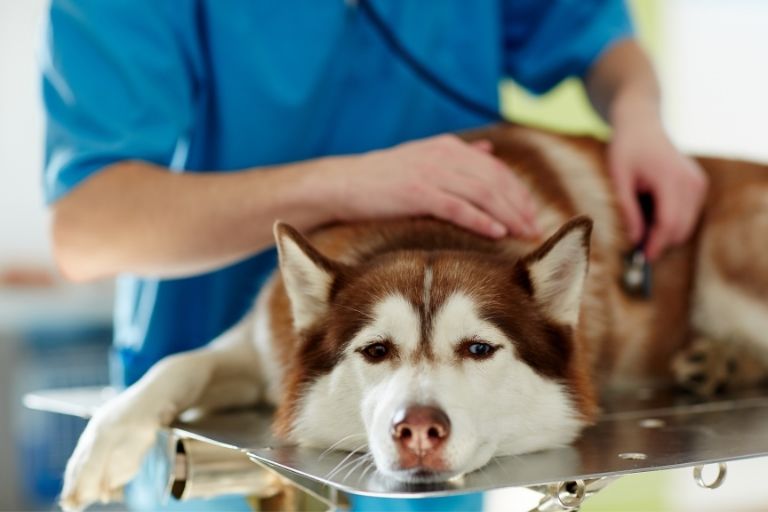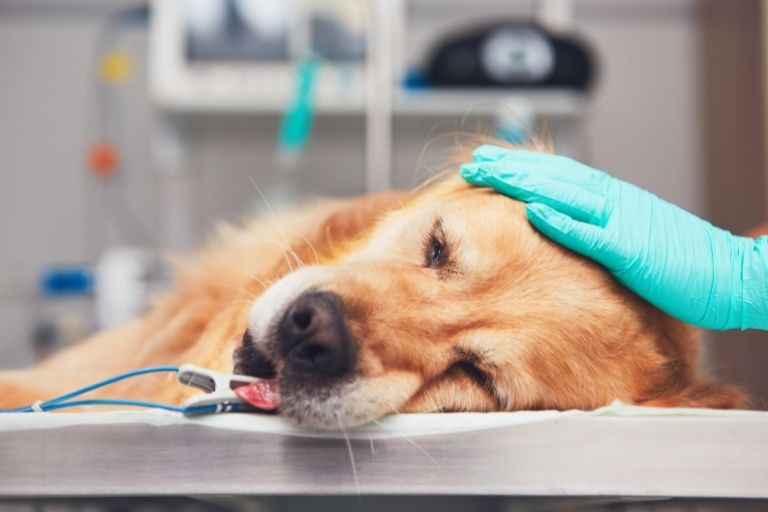When you first bring your dog home to be part of your family, it is a joyous occasion. However, rather than have your canine companion around for 50 or so years, you may only have your four-legged friend as a family member for 10-15 years. At some point, the time may come when your dog is so ill that euthanasia may be the final act of care and compassion you can show them. If you’re wondering what do vets do after they put a dog to sleep and how you should prepare yourself for that moment, seek out the advice of your vet and keep the following tips in mind.
Table of Contents
- What to Expect When Your Pet is Put Down?
- Why Vets Use Euthanasia?
- Do Animals Feel Anything When They are Euthanized?
- How Do Vets Take Care of Euthanized Pets?
- Grieving the Loss of Your Pet
- FAQs
What to Expect When Your Pet is Put Down?
When the time comes for your dog to be euthanized, preparation beforehand is important. To begin with, you’ll need to make some decisions, such as whether you want to bury your dog or have them cremated, whether or not your emotions will allow you to stay with your dog during the euthanizing process, and if you want someone such as a friend or family member to be with you at this difficult moment.
Unfortunately, it is common for many pets to excrete urine or feces upon being euthanized, so your vet will usually place a towel underneath them prior to the process. Also, if your vet used an IV to administer the drugs to your dog, the vet or a technician will remove the needle and assist you in helping to clean up your dog and place it inside a carrier or other container.
Finally, don’t be surprised to have a rush of emotions once your dog has died. But remember, everyone acts differently when faced with death, so even if you don’t cry many tears, that does not mean you did not love your dog with all your heart.

Why Vets Use Euthanasia?
As to why vets use euthanasia, the simple answer is that it is a quick and painless method of relieving an animal’s suffering. In some situations, it is not uncommon for a pet to be given a sedative prior to being euthanized. This is done so that your vet can enter a vein without any difficulty, which can occur should your dog be afraid or writhing in pain.
Before the Euthanasia
Prior to your dog being euthanized, you will need to schedule an appointment with your vet. When doing so, you can ask about such things as cremation or other related topics for which you may have questions. Also, on the day of your appointment, it is best to call ahead to make sure there will be no delays once you arrive. If you don’t, you may wind up having to sit in the waiting room or your car for a period of time, which can make an already tough day that much tougher.
During the Euthanasia
When your dog is being euthanized, the combination of drugs being used are designed to lead to a complete relaxation of muscles and the ceasing of nerve transmission. As to the question of what happens to pets when they die, they basically go to sleep, which is why euthanasia is often referred to as putting a dog to “sleep.”
Once the drugs are given to your dog, it takes about 10 seconds for them to take effect. When they do, your dog will take a deep breath, become weak, and lapse into what looks like a deep sleep. Also, unlike others who wonder what happens to pets when they die, don’t be surprised to see your dog continue breathing slightly after all movement has ceased. This is perfectly normal, since it can take their body a few seconds to completely shut down. Known as an unconscious breathing state, your vet will closely monitor your dog’s breathing and heart rate to determine the exact time of death.
Postmortem: After the Euthanasia
Once euthanasia is finished, the postmortem period begins. This involves whether you take your dog home to be buried, have your vet help you arrange for cremation services, or even discuss the possibility of having your dog undergo an autopsy to determine its cause of death. Sometimes recommended when the dog dies suddenly or the cause of death was unclear, never feel pressured into agreeing to a postmortem. Also, remember that for pets that undergo postmortem, they are not usually returned to their owner for burial, so keep this in mind.
Do Animals Feel Anything When They are Euthanized?
If there is one thing many pet owners worry about and often feel guilty about when euthanizing a pet, it is believing that they have put their beloved pet through more pain at the end of their life. However, that is not how euthanasia works. In fact, since the drugs used immediately terminate nerve transmission, your pet has no thought or sensation when undergoing this procedure, meaning they are incapable of feeling pain.
How Do Vets Take Care of Euthanized Pets?
Even if you gave your dog excellent care during its life and it still had to be euthanized, don’t feel as if you have to make an immediate decision on how to dispose of your pet’s body. Regarding how do vets dispose of euthanized pets, they often place pets inside cold storage facilities until an owner has decided on final arrangements. This not only stops body decomposition, but also gives you as the grieving owner time to make a well-informed decision.

Grieving the Loss of Your Pet
Finally, remember that just as it is when you are grieving the loss of a human, the death of your beloved pet can hit you just as hard or even harder than you anticipated. Because of this, don’t try to hide your emotions from those around you. In fact, you will feel better if you can talk to family and friends, your vet, and others who will understand how you feel. In fact, many grieving pet owners choose to join special support groups, which can help tremendously.
Now that you know more about what do vets do after they put a dog to sleep, it may make it a bit easier should this difficult decision need to be made. But in the meantime, enjoy the days you have left with your canine family member.
FAQs
When a veterinarian euthanizes an animal, the body is handled with care and respect. The exact process can vary based on factors such as the veterinary practice’s policies, the owner’s wishes, and local regulations. It’s important to discuss your preferences with your veterinarian ahead of time or at the time of euthanasia. They can provide guidance on available options and help you make the best decision for your pet based on your wishes and any legal or ethical considerations in your area.
The specific procedures may vary slightly depending on the veterinarian and the clinic’s protocols, but the general process typically involves administering a sedative or tranquilizer to the pet before the actual euthanasia solution,often an overdose of an anesthetic drug. The drug induces unconsciousness and then stops the heart and brain function, resulting in a peaceful passing.




